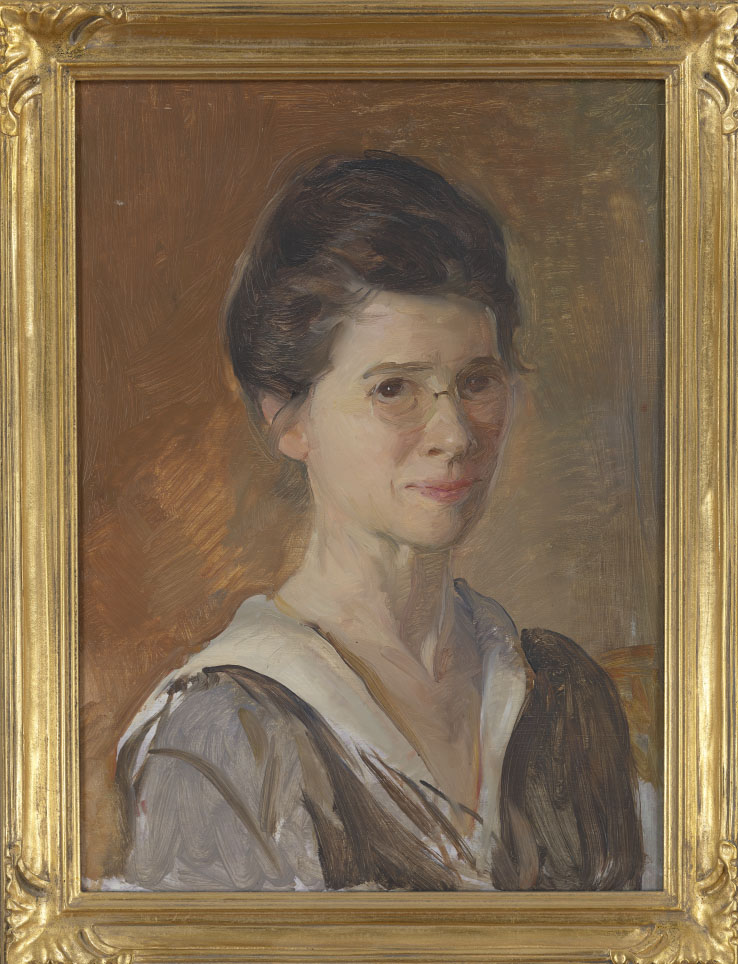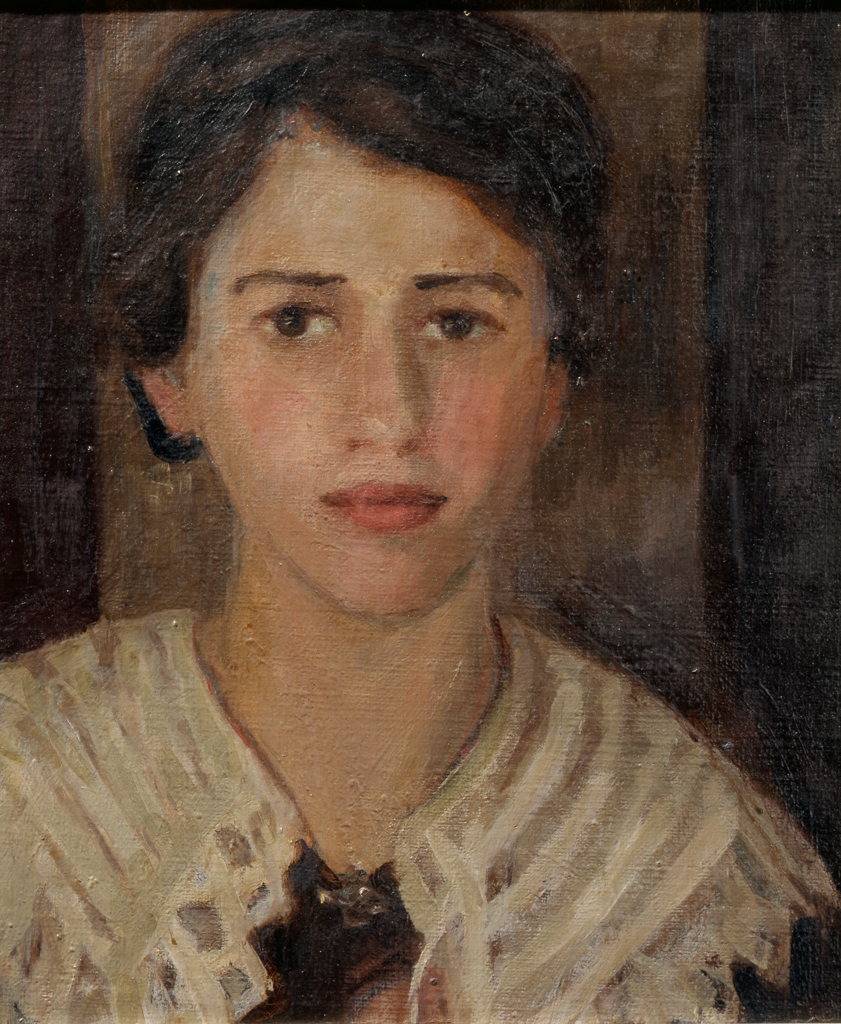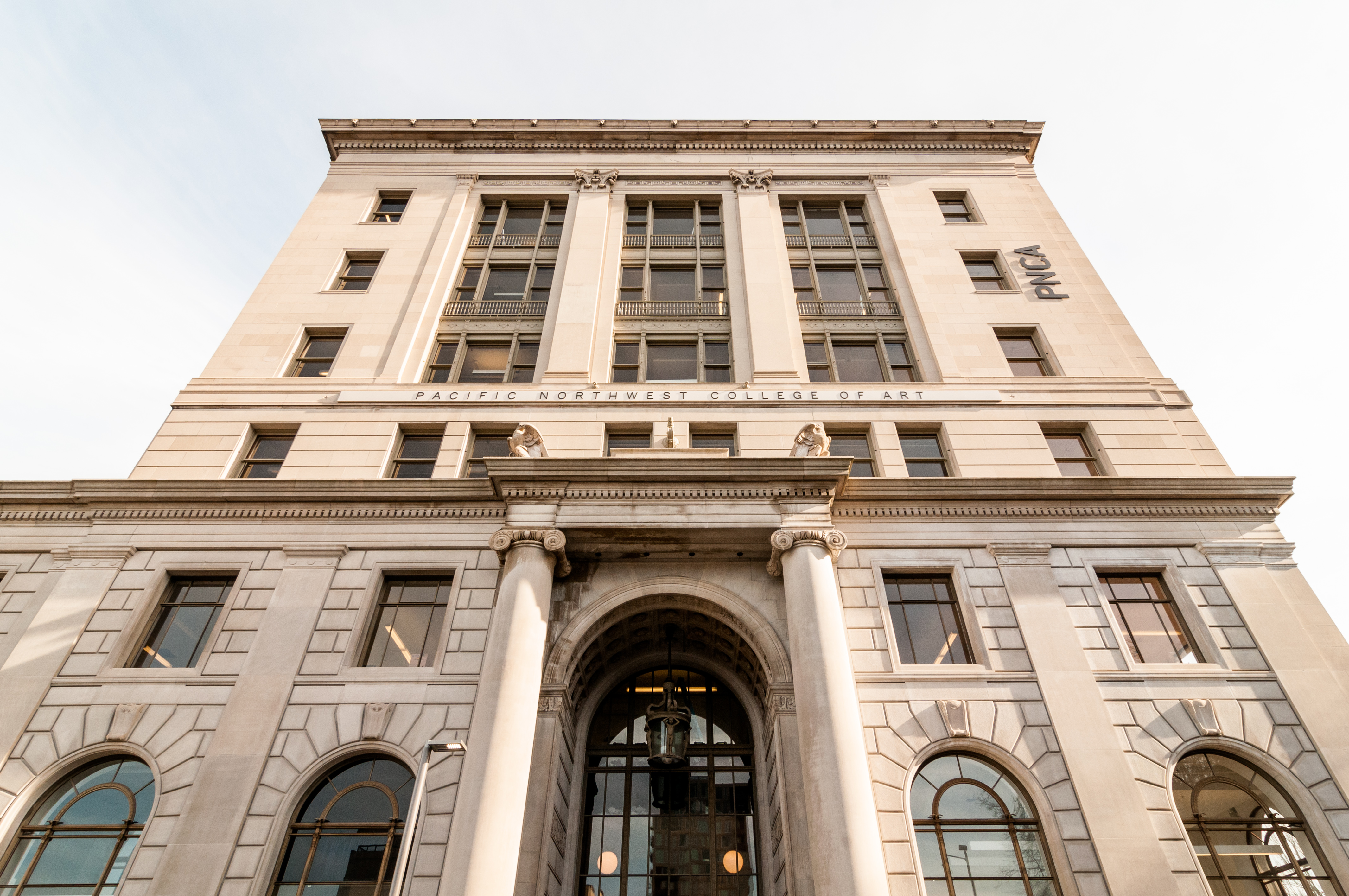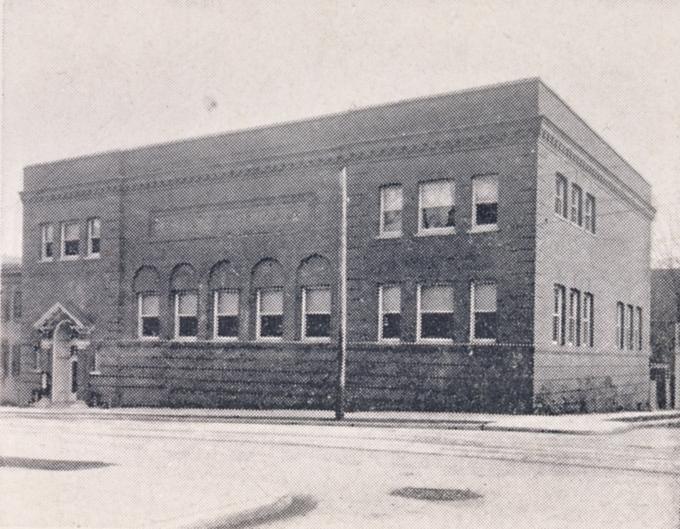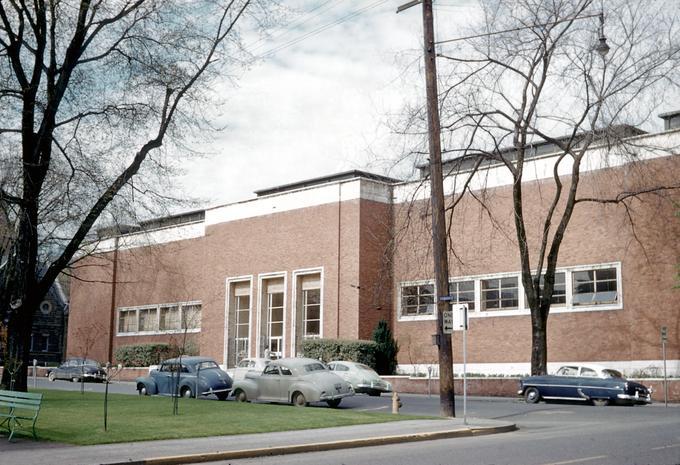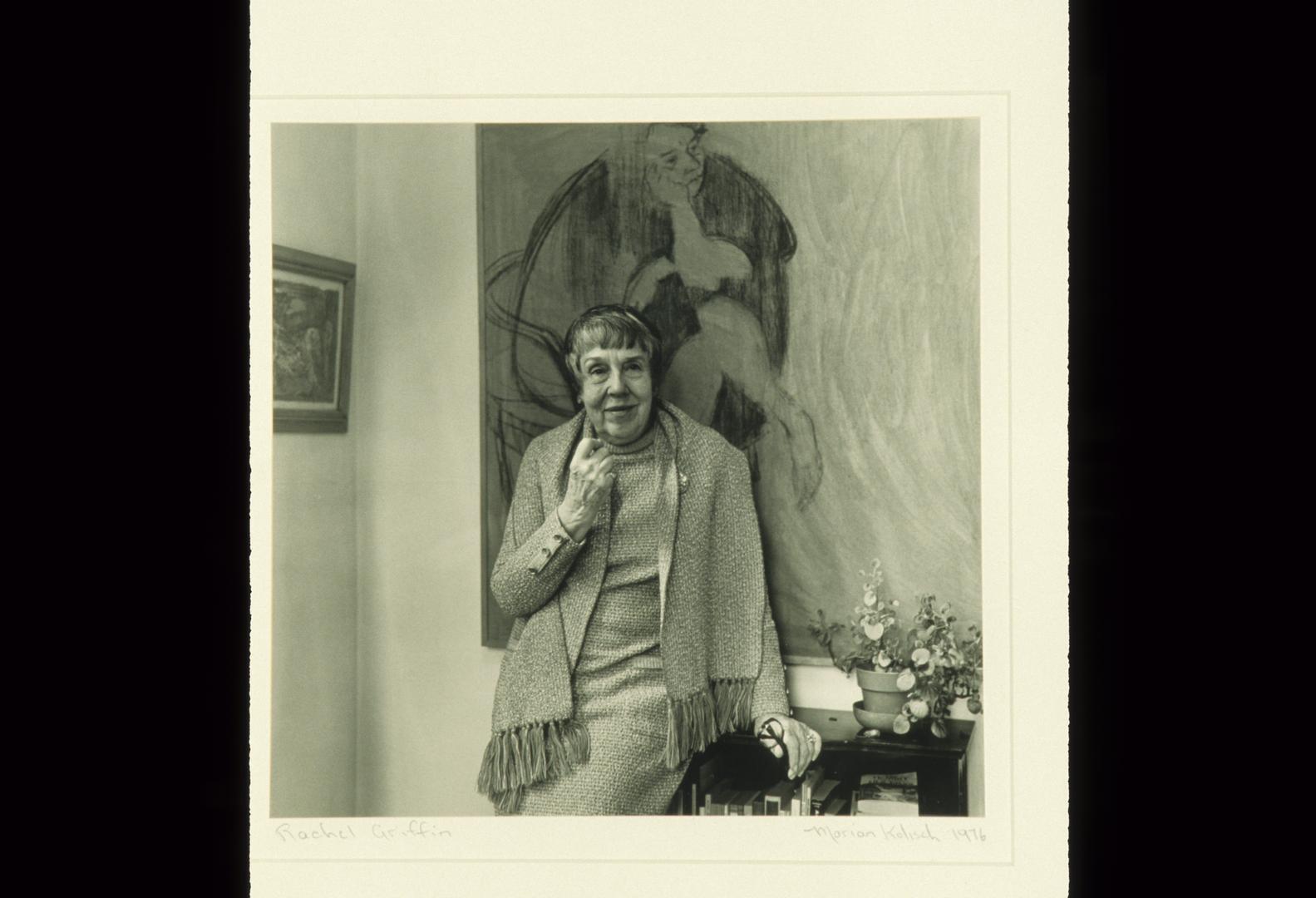Anna Belle Crocker was curator of the Portland Art Association’s museum (now the Portland Art Museum) and director of the School of the Portland Art Association from 1909 to 1936 (later named the Museum Art School and now the Pacific Northwest College of Art). Her career spanned and was shaped by World War I and the Depression, and her vision and intelligence were instrumental in shaping the art culture of early twentieth-century Portland.
Crocker was born on January 19, 1867, in Milwaukee, Wisconsin, and moved to Oregon with her family in 1878. Her love of art began in high school, and she was one of the first women admitted to the Portland Sketch Club in 1896. This group met in the galleries at the museum to draw from the plaster casts of Greek and Roman sculpture that formed its first collection.
Trained as a typist, Crocker found work at Ladd and Tilton Bank in Portland. William Mead Ladd, the bank’s president, was a founder of the Portland Art Association, and he encouraged Crocker’s art education, allowing her to take two leaves of absence, in 1904 and 1908, to study at the Art Students League in New York City. In 1908, she received a telegram offering her the dual job of museum curator and director of the Art Association’s newly formed school. She prepared herself for her new position by visiting museums on the East Coast and in Europe before returning to Portland that fall.
While Crocker’s title at the Portland Art Association was curator, she was, in effect, the museum’s director, responsible for collections, exhibitions, membership, budgets, and publicity. With little in the way of financial resources and no permanent collection on which to rely—other than the plaster casts and the reproductions of famous works of art—she brought a range of exhibitions to the small museum, relying on partnerships with art professionals and a handful of local collectors.
Crocker's own taste was conservative, but she believed that it was important to exhibit cutting-edge art in Portland for the benefit of the community and the art school. In 1913, she borrowed Marcel Duchamp’s groundbreaking painting, Nude Descending A Staircase No. 2 (1912), from its owner and showed it in the same year that it scandalized audiences in the New York Armory Show. In 1923 and 1924, she collaborated with Portland collector Sally Lewis to bring two exhibitions to Portland, including works by Pablo Picasso, Georges Braque, Henri Matisse, Diego Rivera, and Constantin Brâncusi. A young Seattle photographer, Imogen Cunningham, had her first museum exhibition in Portland in 1918.
For Crocker, the Art School was a branch of the museum, and the mission of each was education and what is now called community outreach. Early on, she forged a partnership with the public schools and hired a professional docent to lecture young students on the fundamentals of Greek and Roman art. She also instituted a partnership with Reed College, a five-year program that awarded Reed students a BA-BFA degree. That partnership ended when PNCA became a college within Willamette University in 2021.
Crocker was a realist who understood that art students needed training in teaching and graphic design to become professionals, as well as in painting and drawing and sculpture. That approach reflects the era’s emphasis on the Arts and Crafts movement and also on Crocker’s own practicality and her curiosity about educational theory. She was particularly interested in the teaching philosophies of American artist and educator Arthur Wesley Dow and Italian philosopher Benedetto Croce.
The Museum Art School proved successful from the moment it opened its doors in October 1909, with the teacher’s salary guaranteed by a gift from Portland’s Arts and Crafts Society. Nearly a hundred students enrolled during the first year, and enrollment remained steady. Its success prompted the Art Association to hire painter and teacher Harry Wentz in 1910, and other instructors followed. In the early years, the curriculum included evening classes and Saturday classes aimed at children.
Over the years, Crocker and her staff crafted a comprehensive program, offering two years of study that incorporated foundation classes and advanced painting and drawing alongside sculpture, art history, weaving, pottery, and woodcarving. Crocker organized an art history lecture series for students, drawing on the expertise of her staff and delivering lectures herself, aided by a growing collection of lantern slides. Students were awarded certificates after two years of preliminary study and an advanced thesis year. Many went on to institutions such as the School of the Art Institute of Chicago, Pratt Art Institute, and the Art Students League.
By the time Crocker retired in 1936, the Portland Art Museum had acquired a modest collection of artworks and had moved to its current location at 1219 Southwest Park Avenue. She had been instrumental in supporting the design and overseeing the construction of the first wing in 1931, the work of architect Pietro Belluschi, whose brilliance she noted when he had attended night classes at the Museum Art School.
Crocker was both a painter and a printmaker, best known for her portraits, painted in a loose, Impressionist style. Three of her paintings are in the collections of the Portland Art Museum. In her retirement, she wrote a memoir that chronicled her experiences and outlined her philosophies as curator and educator. It Goes Deeper Than We Think: Reflections about the Role of Art in Education was privately published in 1946.
Anna Belle Crocker died on February 2, 1961. At her memorial service, curator and educator Rachael Griffin, who graduated from the Museum Art School in 1929, described her: "Miss Crocker was a tiny, soft-spoken woman with tremendous courage and stamina, absolutely uncompromising if she thought that the objectives of the museum and school were threatened. She had a core of iron."
-
![]()
Anna Belle Crocker, self-portrait, 1926.
Courtesy Portland Art Museum -
![]()
Portrait of Leta M. Kennedy, by Anna Belle Crocker, 1917-1918.
Courtesy Portland Art Museum
Related Entries
-
![Pacific Northwest College of Art]()
Pacific Northwest College of Art
Pacific Northwest College of Art (PNCA), founded in 1909 by the Portlan…
-
![Portland Art Association]()
Portland Art Association
The Portland Art Association (PAA) was organized on December 12, 1892, …
-
![Portland Art Museum]()
Portland Art Museum
The Portland Art Museum, which opened in 1895 in the city library with …
-
![Portland Art Museum School]()
Portland Art Museum School
In October 1909, the Portland Art Association (PAA) opened its school, …
-
![Rachael Griffin (1906-1983)]()
Rachael Griffin (1906-1983)
Rachael Griffin, educator and curator, is recognized for encouraging lo…
Map This on the Oregon History WayFinder
The Oregon History Wayfinder is an interactive map that identifies significant places, people, and events in Oregon history.
Further Reading
Roberts, Prudence. Pioneering Modernism: Anna B. Crocker and Early Exhibitions at the Portland Art Museum. Portland, Ore.: Portland Art Museum, 2002.
Crocker, Anna Belle. It Goes Deeper Than We Think: Reflections about the Role of Art in Education. Portland, Ore.: unknown publisher, 1946.
Jones, Catherine. "Anna Crocker Influence Strong on Art Life of Community." Sunday Oregonian, February 12, 1961.
Forster, Patrick A. "'Art Feeling Grows' in Oregon: The Portland Art Association, 1892-1932." M.A. Thesis, Portland State University, 2011.

